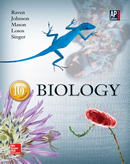1 A) Na+ B) H+ C) ATP D) CO2 E) K+ 2 A) ionic bonding between water molecules B) water potential C) active transport of solutes from the soil into root cells (such as root hairs) D) proton pumps drawing water into cells through osmosis E) Opening and closing of stomata 3 A) epidermis B) cortex C) ground tissue D) xylem E) endodermis 4 A) excessive heat on a leaf surface B) excessive light on a leaf surface C) root pressure D) active transport of water into leaf cells E) active transport of solute into vessels 5 A) Potassium accumulates within the cell, rendering it hypertonic. B) Chloride enters the cell, making it hypertonic. C) ATP-driven proton pumps provide the energy to move K+ and Cl- across the membranes. D) All of the above affect guard cell function. E) none of these are important in water movement. 6 A) stomata B) halophytes C) parenchyma D) lenticels E) collenchyma 7 A) Sink cells could move material, perhaps a solute such as sucrose, out of a particular region of the phloem into themselves. Water will follow the solute out of the phloem in that region. This will create a low water potential within the phloem into which water from elsewhere in the phloem will move. B) It could pump into the adjacent phloem hydrogen and sugar, together, in order to create a hypotonic solution within that part of the phloem. C) The sink could increase its own turgor pressure, causing water potential to move new, energy rich material into it. D) Stomata in the sink could open and draw in new, fresh photosynthate to take its place. 8 A) true B) false 9 A) membrane proteins B) phospholipid channels C) vacuole portals D) cell wall diffusion pumps E) plasmodesmata 10 A) It increases. B) It decreases. C) It approaches zero. D) It approaches infinity. E) It induces cavitation. 11 A) sucrose pumps B) xylem diameter sphincters C) phloem diameter sphincters D) cell wall microfilaments E) guard cells 12 A) deprivation from sunlight B) leaching of solutes into the environment C) erosion of the root system D) oxygen deprivation E) excessive transpiration 13 A) Xylem transport requires active pumping at stomata. Phloem doesn't. B) Phloem movement relies on the water column in plants and is solar powered. Xylem isn't. C) Phloem carries fluid from the soil to the leaves, while xylem is the reverse. D) Phloem can reverse direction, depending on the activity of the "source" and "sink" of its materials. Xylem is more unidirectional. E) Xylem has soluble materials within it. Phloem contains insoluble ones. 14 A) solute pressure B) auxin C) osmotic pressure D) pressure potential E) physical pressure 15 A) The water potential of the root must be less than that of the soil. B) The water potential of the root must be continuously changing. C) The water potential of the root must be greater than that of the soil. D) The water potential of the root must be equal to the water potential of the soil. E) The water potential of the root must be greater than that of the leaves. 16 A) bark B) the fiber structure of the phloem and xylem C) a combination of structural and physiological factors D) water balance alone 17 A) a pushing force due to transpiration B) a pushing force due to osmotic pressure C) a pulling force due to transpiration D) a pushing force due to sucrose and other solutes moving in and out of the xylem 18 A) true B) false 19 A) -.35 MPa B) -.5 MPa C) .7 MPa D) -.2 MPa 20 A) roots B) stems C) food-storage tissues D) developing fruits 21 A) Sieve cells must be capable of excreting hormones in order to initiate phloem loading. B) Sieve cells must be capable of establishing the pressure with active transport that drives phloem loading. C) Sieve cells must be capable of producing enzymes that can catabolize sucrose with which to drive phloem loading. D) Sieve cells must be capable of transpiration with which to drive phloem loading.





